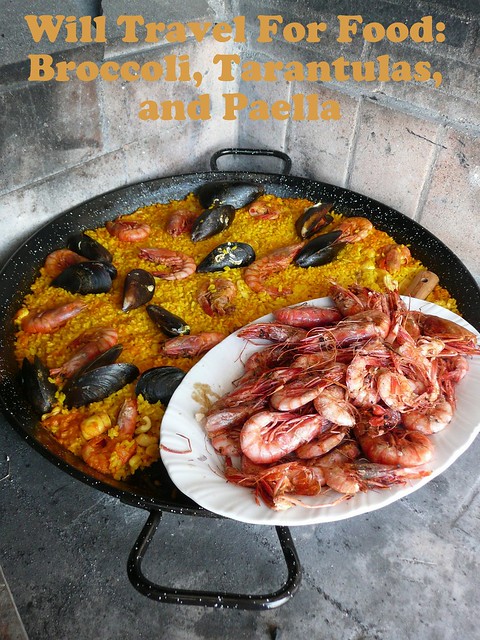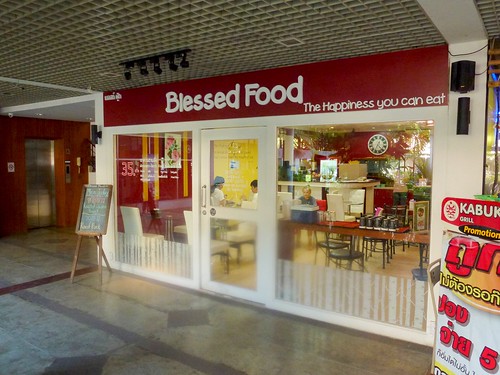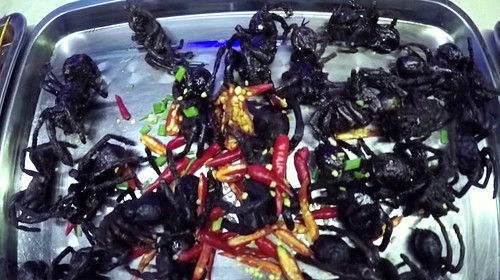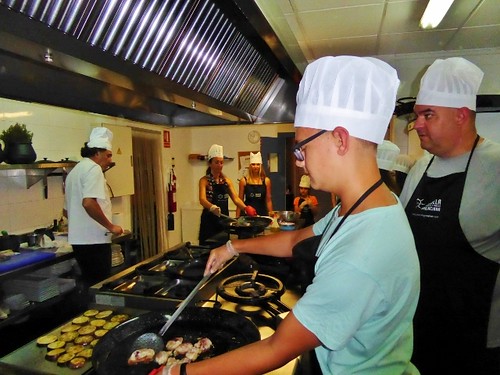Food is wonderful. It tastes great, there are an almost infinite number of options, and it keeps you alive.

Obviously not all food is jam-packed with all the right flavors, but when I think of good food, the list doesn’t stop. Pizza, ice cream, bananas, chicken, lentils, beans, tacos, burritos, eggs, pb&j sandwiches… I could go on forever. But the first thing that pops into this food-loving head of mine is broccoli with soy sauce.
I get that some people dislike broccoli with a passion, but the way it’s prepared at a certain restaurant in Chiang Mai, Thailand, makes me long for the days of sitting down and eating this amazing dish after a long day of urban exploration. For those who are curious, the restaurant I’m talking about is Blessed Food. It’s on Nimman road, and it is everything I could hope for from a Thai restaurant: it’s clean, has very reasonable prices, and amazing food.

Oh, how I miss this place…
Enough about this hidden gastric gem - let’s talk about the food: this certain meal comes with broccoli (surprising, I know) on a bed of rice, cooked and coated with just enough soy sauce, accompanied by a few cucumber slices and what I believe to be chicken broth.
Everything about the food on that plate makes me want to buy a plane ticket to Thailand and go order it, because it’s truly amazing. But that isn’t what makes it my favorite food. Taste is an important factor, but everyone’s tastebuds change and the cook won’t always be able to make the exact same meal every day for the rest of eternity.
What makes this wonderfully simple veggie dish my favorite meal is the memories it brings up. Living a nomadic lifestyle for a while isn’t something everybody does, but all of the adventures and cultural shock (squat toilets, for example), scary and unique experiences, and just having a fantastic time learning and having fun with my family is something I am incredibly grateful to have lived.
Whether it’s riding a moped up to a temple on a mountain at the crack of dawn to see a beautiful sunset, or working in cafes just to use the internet, every single memory is brought back when I think of this meal.
After all of this praise, I don’t want you to think that all food in South East Asia is that of Michelin Star restaurants… so I thought I’d compensate a bit by telling you about the “delicious” tarantula I ate.
Nobody likes tarantulas, they’re all hairy and big and just gross. Ew.
That clearly doesn’t mean people don’t like to eat tarantulas - quite the contrary, actually. In Siem Reap, Cambodia, you could buy a fried tarantula for only $1, an amazing deal that many tourists were taking advantage of, including myself.

After I purchased the crisp creepy crawly, the little boy at the stand gladly took my money and focused his attention on some handheld game console, as if eating this beast of an insect was just some normal thing he witnessed. Meanwhile, I was freaking out.
A few minutes passed before I worked up the guts to down the spider, and, seeing no other option, I just shoved the whole thing in my mouth. I don’t have the exact measurements of the spider, but I can assure you it was a mouthful.
The first thing (or should I say things) that got consumed were the spiky hairs - they seemed to dissolve on contact, leaving me with the legs and body. Its 8 legs tasted exactly like each other: absolutely, undoubtedly, the most disgusting combination of textures and “flavors” I had (and hopefully ever will) tasted. They were crunchy on the outside and soft and mushy on the inside, sort of like the perfect french fry, except they were the legs on a tarantula. After gleefully swallowing the spider’s limbs, it was time to take on the body (the head was so small it didn’t really count).
If you have seen a tarantula, you’ll know that the body is basically just a black, hairy sphere, filled with guts and whatever else tarantulas have inside. I didn’t think about what was in my mouth at the time, I just decided to bite. Ever so slowly, I shut my jaw on the remains of the spider…it was much harder than expected. That is, until it burst in my mouth like an overfilled water balloon.
*POP*
The sound echoed through the street, leaving me with a mouthful of warm and delicious tarantula innards. Panic set in and I just started chewing and swallowing as fast as possible, and before I knew it, my mouth was empty. The foul taste still danced on my tongue, but my mouth was empty.
Luckily, I had thought ahead and brought a bottle of water, which didn’t last long after downing the fried critter.
Overall, it was definitely an experience. I can’t think of the right adjective to use, but it was an experience. If you’re into spiders and such, I’d recommend it to you, but since I am a sane human being… I won’t be trying any fried tarantula again for a little while.
I highly doubt it, but if you’ve eaten something even crazier than a fried tarantula, let me know in the comments.
To get that not-so-mouthwatering image out of your head, let’s bring the gastronomic focus on to a very important dish to where I currently live, Spain.
You probably heard of paella (pronounced pa-e-ya) - it’s a rice dish that originated in Valencia, Spain. Although it is regarded by most Spaniards as a regional Valencian dish (and not much more), those from Valencia see it as an identifying symbol of Valencian (and Spanish) culture.

The original paella, paella valenciana, has rice, vegetables, chicken, rabbit, and snails. But I’m going to focus on paella marisca, seafood paella.
I live right on the Mediterranean Sea on the southern coast of Spain, and seafood is a massive part of the local culture. In the summer, you can find the beach littered with sand-filled boats cooking “espetos” (skewers) of sardines. Once, while on a school beach trip, a friend of mine saw his dad reel in a squid - what would later become their dinner for that night.
Every Saturday, a huge market building in the center of town hosts a Fish market, where local fishermen and venders can sell their catch (in the market, you can also find fresh produce from local farms and butchers from this town).
So out of convenience, the paella made by grandmothers and chefs around here has seafood.
Depending on the season, it can have a wide variety of fish and other sea creatures, like prawns and mussels.
I do have to note that there is quite a bit of controversy when it comes to making paella with regard to what you put in it. If there is one small modification to the original recipe, many Spaniards wouldn’t hesitate to share their outrage. So to prevent a culinary civil war, most variations of paella receive the name arroz con cosas, which, as a literal translation, means “rice with things”.
Just a heads up before you get bombarded with hate after posting a picture of paella with pork.
What food is important to your culture? I think the huge number of cultures, each with its own special dish or delicacy is just amazing!
Lars Wagoner is a member of the Youth Travel Blogging Mentorship Program, and lives in Spain. Follow his family's adventures abroad at http://wagonersabroad.com/
All photos courtesy and copyright Lars Wagoner except word photo: creative commons
